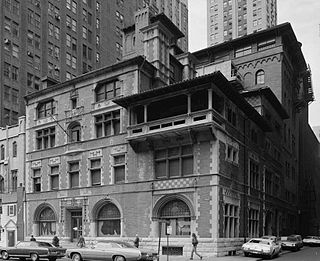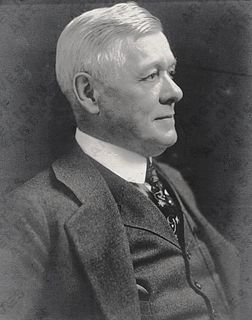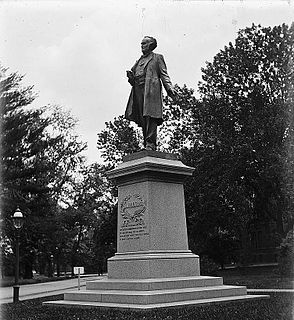| Benjamin Franklin | |
|---|---|
 | |
| Artist | John J. Boyle |
| Year | 1896-99 |
| Type | Bronze |
| Dimensions | 230 cm× 130 cm× 150 cm(90 in× 53 in× 59 in) |
| Location | Philadelphia, Pennsylvania, United States |
| 39°57′7″N75°11′37.25″W / 39.95194°N 75.1936806°W | |
| Owner | University of Pennsylvania |
Benjamin Franklin is a bronze sculpture of a seated Franklin by John J. Boyle at the University of Pennsylvania in Philadelphia, Pennsylvania. It is located in front of College Hall, on Locust Walk, between 34th and 36th Streets, [1] and is one of three statues of Franklin on the campus.

Benjamin Franklin was an American polymath and one of the Founding Fathers of the United States. Franklin was a leading author, printer, political theorist, politician, Freemason, postmaster, scientist, inventor, humorist, civic activist, statesman, and diplomat. As a scientist, he was a major figure in the American Enlightenment and the history of physics for his discoveries and theories regarding electricity. As an inventor, he is known for the lightning rod, bifocals, and the Franklin stove, among other inventions. He founded many civic organizations, including the Library Company, Philadelphia's first fire department and the University of Pennsylvania.

The University of Pennsylvania is a private Ivy League research university in Philadelphia, Pennsylvania. It is one of the nine colonial colleges founded prior to the Declaration of Independence and the first institution of higher learning in the United States to refer to itself as a university. Benjamin Franklin, Penn's founder and first president, advocated an educational program that trained leaders in commerce, government, and public service, similar to a modern liberal arts curriculum.

Philadelphia, known colloquially as Philly, is the largest city in the U.S. state and Commonwealth of Pennsylvania, and the sixth-most populous U.S. city, with a 2018 census-estimated population of 1,584,138. Since 1854, the city has been coterminous with Philadelphia County, the most populous county in Pennsylvania and the urban core of the eighth-largest U.S. metropolitan statistical area, with over 6 million residents as of 2017. Philadelphia is also the economic and cultural anchor of the greater Delaware Valley, located along the lower Delaware and Schuylkill Rivers, within the Northeast megalopolis. The Delaware Valley's population of 7.2 million ranks it as the eighth-largest combined statistical area in the United States.
Contents
It was commissioned by department store founder Justus C. Strawbridge in 1896, as a gift to the City of Philadelphia. It was cast by the Henry-Bonnard Bronze Company of New York, and installed in 1899 in front of Philadelphia's Main Post Office, at 9th and Chestnut Streets. [2] Benjamin Franklin was the first United States Postmaster General. The granite pedestal was designed by architect Frank Miles Day. Its inscription quotes President George Washington's eulogy of Franklin:

The Postmaster General of the United States is the chief executive officer of the United States Postal Service; Megan Brennan is the current Postmaster General.

Frank Miles Day was a Philadelphia-based architect who specialized in residences and academic buildings.

George Washington was an American political leader, military general, statesman, and Founding Father who also served as the first president of the United States from 1789 to 1797. He led Patriot forces to victory in the nation's War for Independence. He presided at the Constitutional Convention of 1787 which established the U.S. Constitution and a federal government. Washington has been called the "Father of His Country" for his manifold leadership in the formative days of the new nation.
BENJAMIN FRANKLIN
1706-1790
VENERATED
FOR BENEVOLENCE
ADMIRED FOR TALENTS
ESTEEMED FOR PATRIOTISM
BELOVED FOR
PHILANTHROPYWASHINGTON
(On back of pedestal):
PRESENTED TO THE CITY OF PHILADELPHIA BY JUSTUS C STRAWBRIDGE 1899
(On back of statue):
JOHN J. BOYLE 1899
HENRY-BONNARD BRONZE CO FOUNDERS NY 1899
GIFT OF JUSTUS C STRAWBRIDGE
A signed Founder's mark also appears on the back of the statue. [3]
In 1938, when the Post Office was razed, the City gave the statue on permanent loan to the University of Pennsylvania. Franklin played a major role in establishing the university. It was relocated to the Penn campus, and rededicated on January 21, 1939.
It was cleaned and reinstalled in 1980.





















